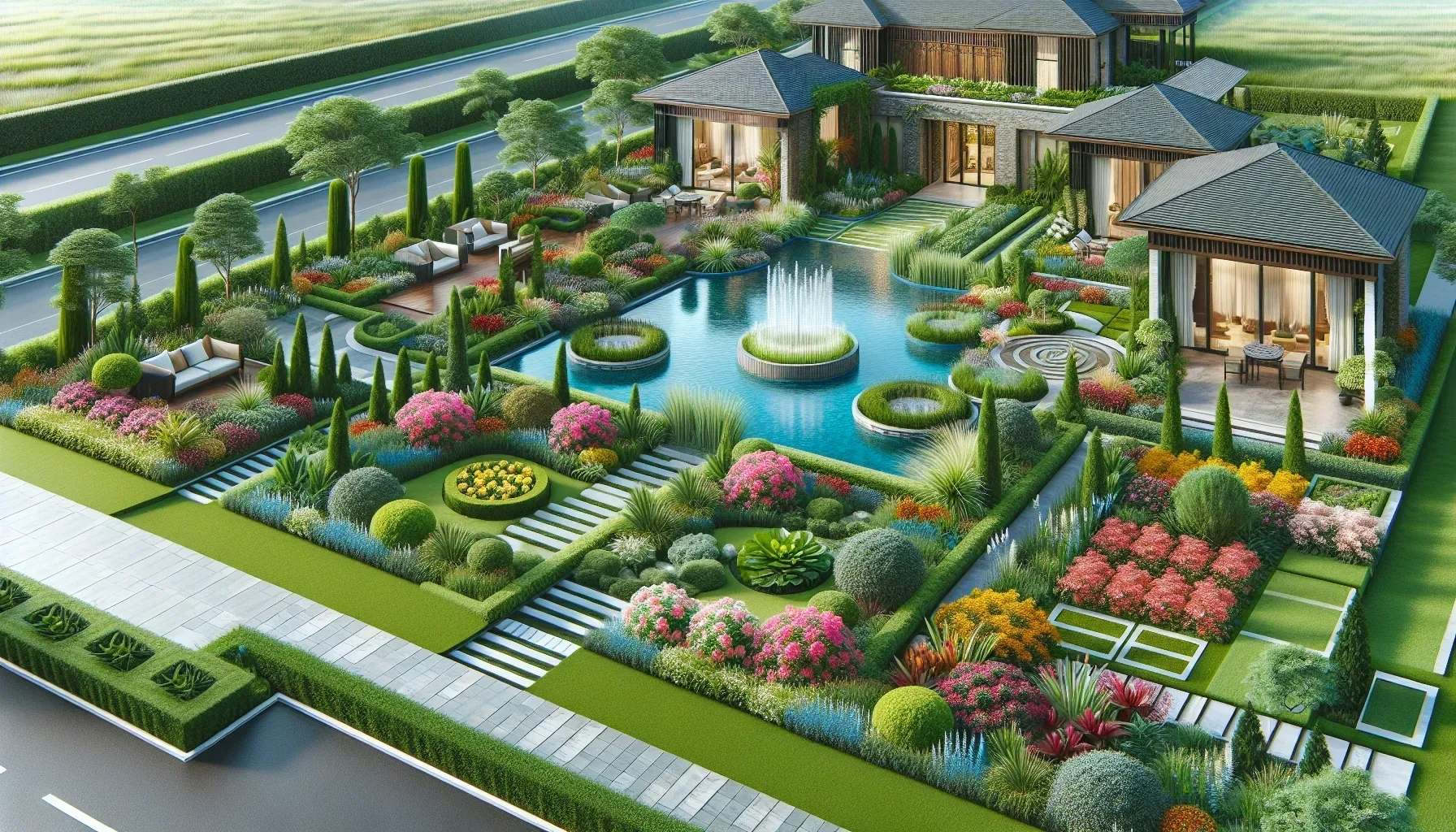How Do You Balance Aesthetics With Functionality in Landscape Design?
Landscape professionals face the unique challenge of marrying form and function in their designs. We've gathered insights from five professionals, including landscape design professionals and company owners, who excel in this field. From harmonizing beauty with low-maintenance elements to involving maintenance insights during the design process, discover their strategies for creating spaces that are both beautiful and manageable.
- Harmonize Beauty with Low-Maintenance Elements
- Plan with Native Species and Water Management in Mind
- Design for Durability in the Long-Term
- Incorporate Sustainable Practices for Eco-Friendly Upkeep
- Consult Maintenance Personnel During Design Process
Harmonize Beauty with Low-Maintenance Elements
In my over 30 years of experience specializing in high-end landscape and pool design, I've come to uphold the principle that beauty and functionality must coexist harmoniously in outdoor living spaces. A key strategy I employ is the integration of low-maintenance, aesthetically pleasing elements. For example, by choosing stone decking and pavers for pool surroundings, we offer clients spaces that are enduring and timeless, yet require minimal upkeep. This choice not only enhances the luxury appeal but also significantly reduces maintenance demands compared to more traditional decking materials.
Moreover, the thoughtful selection of plant life plays a critical role in our designs. From our pool remodel projects, we often incorporate low-maintenance plants that add color and texture without requiring constant care. This principle was evident in a project where we opted for native plants and perennials around a pool area, reducing the need for regular watering, pruning, and fertilization. The use of raised beds and planters further facilitated easier maintenance, allowing for a vibrant, lush environment that respects our clients' time and resources.
Lastly, customization and detailed planning have been pivotal in achieving both aesthetic and functional goals. Each project is meticulously designed with the clients' lifestyle in mind. This personalized approach ensures that maintenance practices are not only manageable, but also seamlessly integrate into the homeowners' routines. For instance, designing an outdoor kitchen with high-quality materials not only elevates the space's elegance, but also ensures durability and ease of cleaning, ultimately serving as a testament to how well-planned design can simplify upkeep without compromising beauty.

Plan with Native Species and Water Management in Mind
Balancing aesthetics with functionality in landscape design is a challenge that I tackle through careful planning and innovation. My approach incorporates native plant species that are not only beautiful, but also thrive in the environment, reducing the need for excessive maintenance. I integrate natural water-management techniques, such as rain gardens, to manage drainage efficiently while adding unique visual elements to the design.

Design for Durability in the Long-Term
It's crucial to ensure your designs not only look great, but also hold up against the test of time with minimal fuss. Start with a deep dive into what your clients actually want and need. This isn't just about making things look good—it's about smart design that anticipates future maintenance.
Opt for high-quality, weather-resistant materials that can stand up to the elements, reducing wear and tear. Think of it as engineering your fences not just for today, but for the future—minimal maintenance, maximum durability. This approach doesn't just solve problems; it prevents them.

Incorporate Sustainable Practices for Eco-Friendly Upkeep
It is important to not only create visually appealing designs, but also functional and sustainable ones. By incorporating sustainable practices into our designs, we can ensure that the maintenance of the landscape will be minimal and eco-friendly. This can include using native plants, installing irrigation systems, and implementing proper drainage techniques to conserve water and reduce the need for frequent maintenance.

Consult Maintenance Personnel During Design Process
It is important to have a keen understanding of the market and how different factors can influence property values. As a landscape architect, your expertise goes beyond just the value of the property. You are responsible for creating outdoor spaces that are not only visually appealing but also functional for maintenance purposes.
One way to ensure that your designs meet both aesthetic and functional requirements is by considering the maintenance needs of the space during the design process. This means taking into account factors such as accessibility for equipment, ease of irrigation and drainage, and choosing low-maintenance plant species.
Involving maintenance personnel in the design process can help identify potential issues and find solutions before construction begins. Their input can also provide valuable insights on how to make the space more efficient and easy to maintain in the long run.
Incorporating sustainable design practices can also contribute to the functionality of the space. Using native plants and materials, as well as implementing techniques like rainwater harvesting and natural stormwater management, can reduce maintenance needs and costs over time.
Regular maintenance is crucial for keeping outdoor spaces looking their best.


